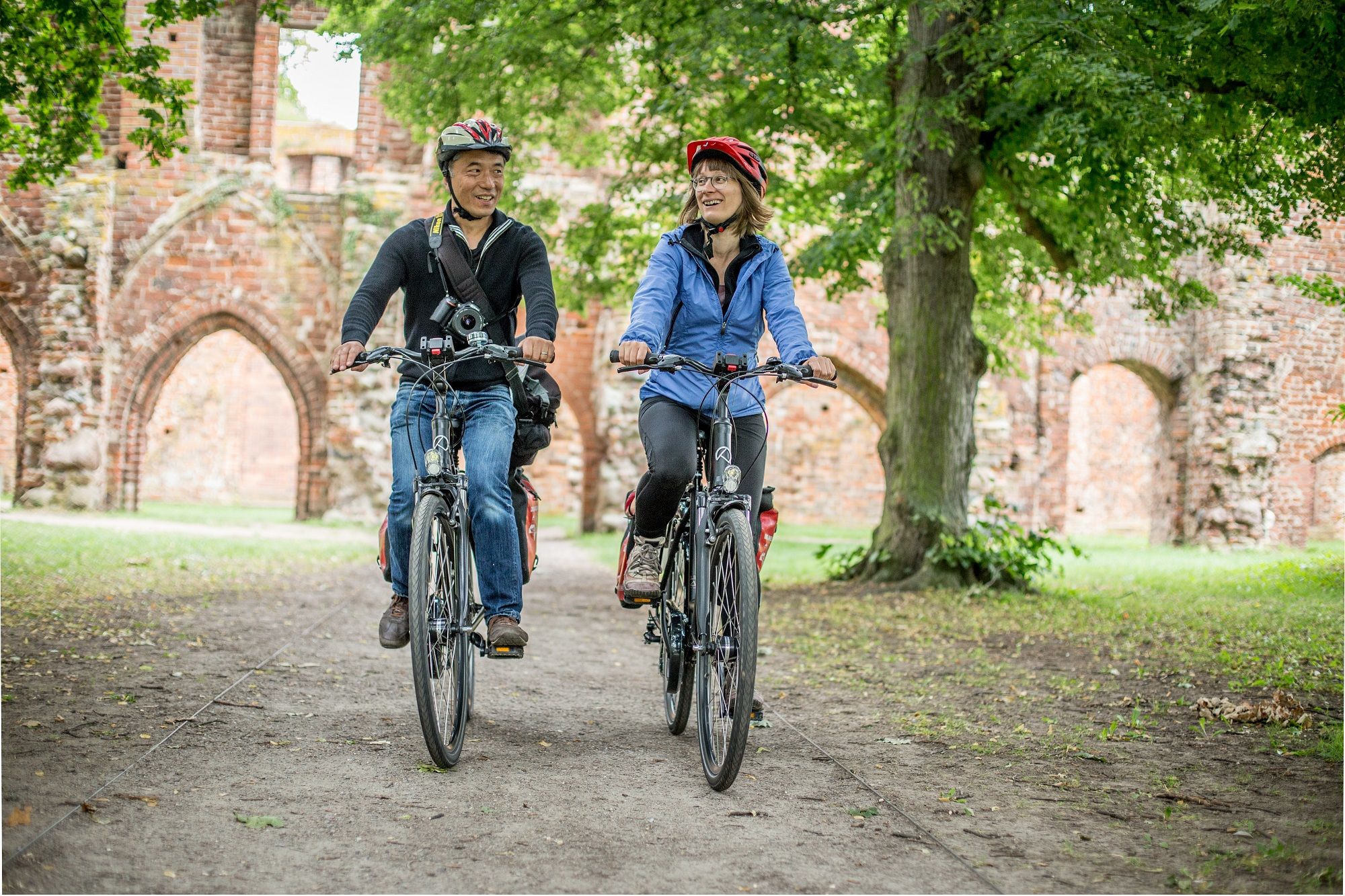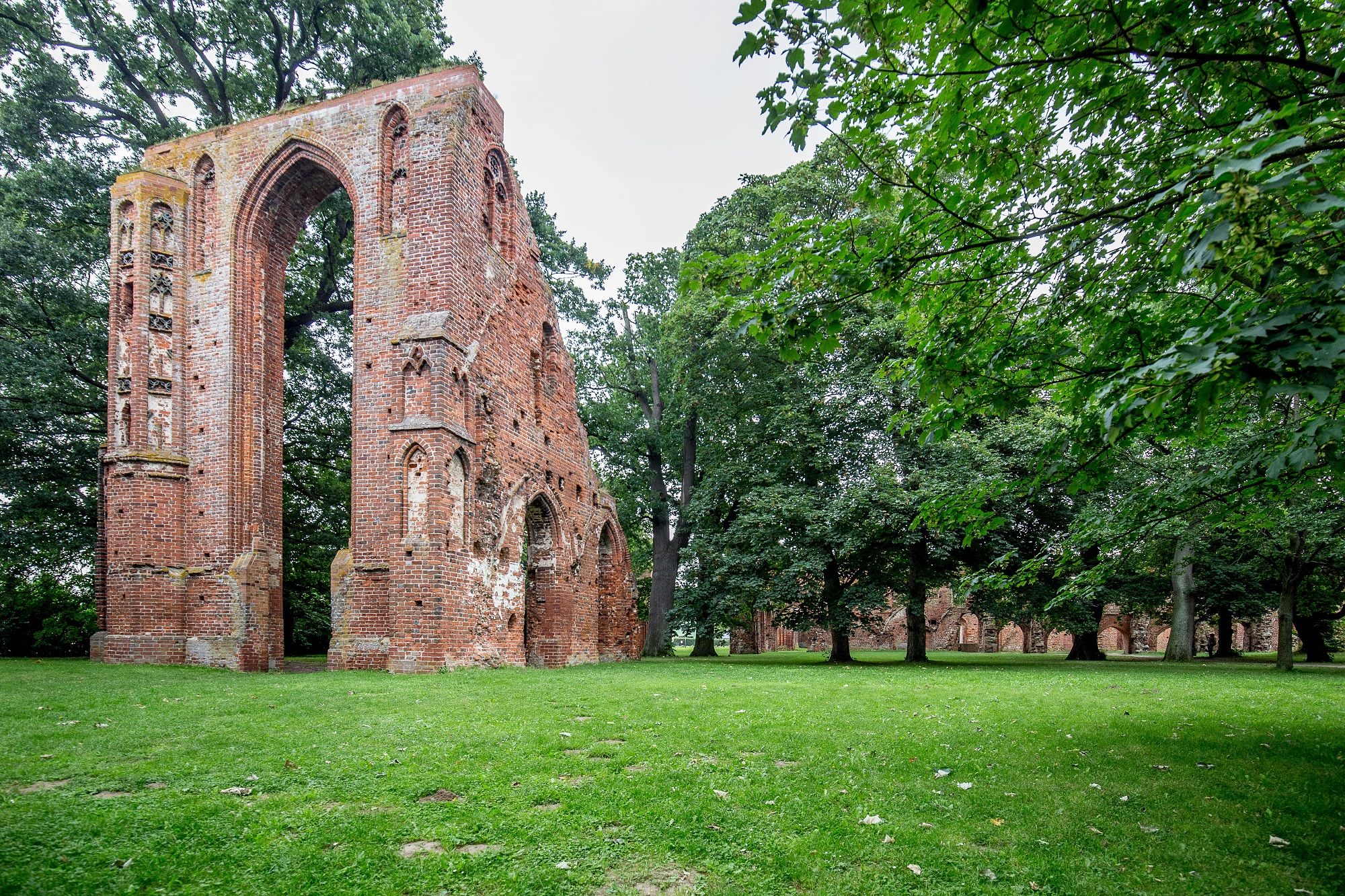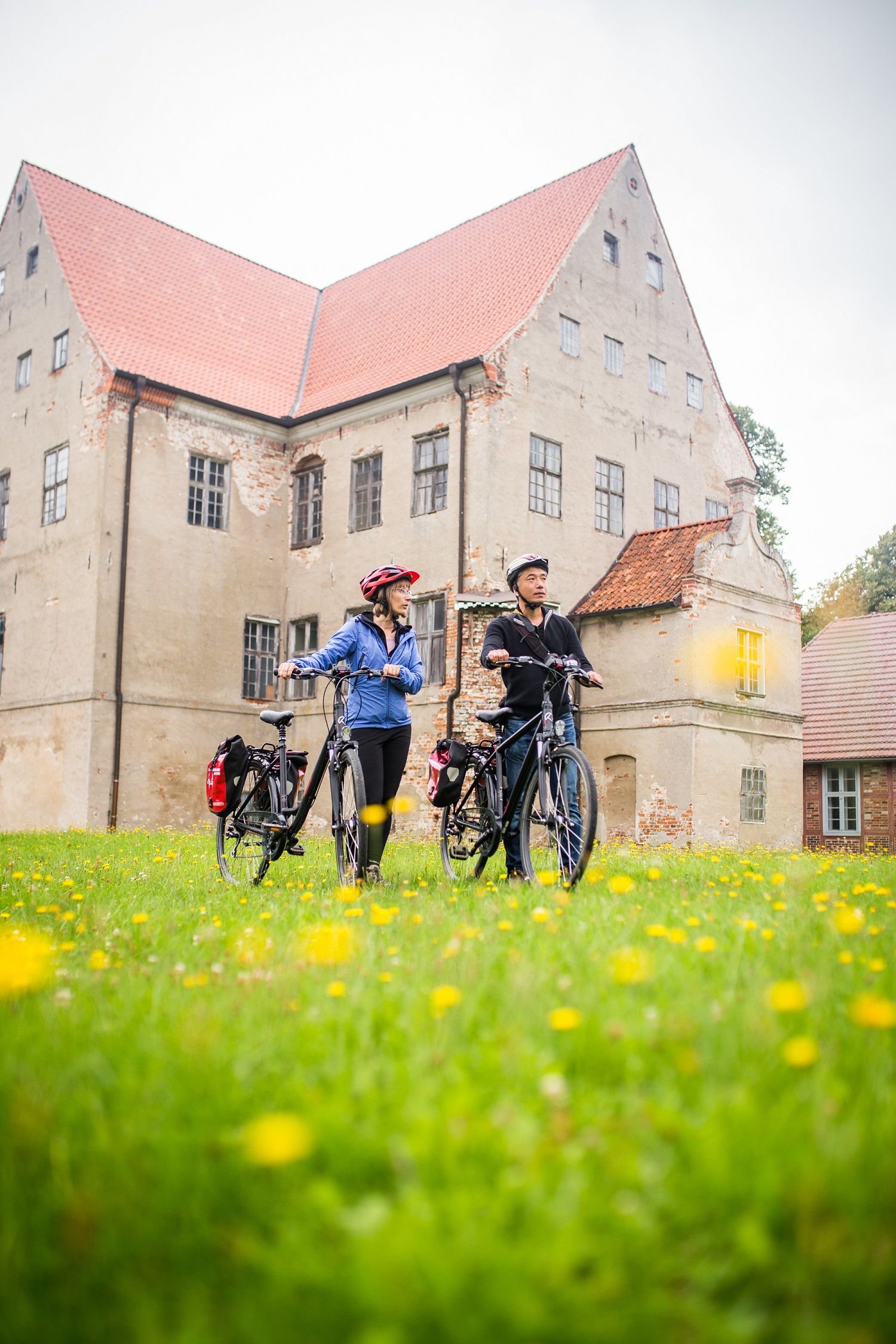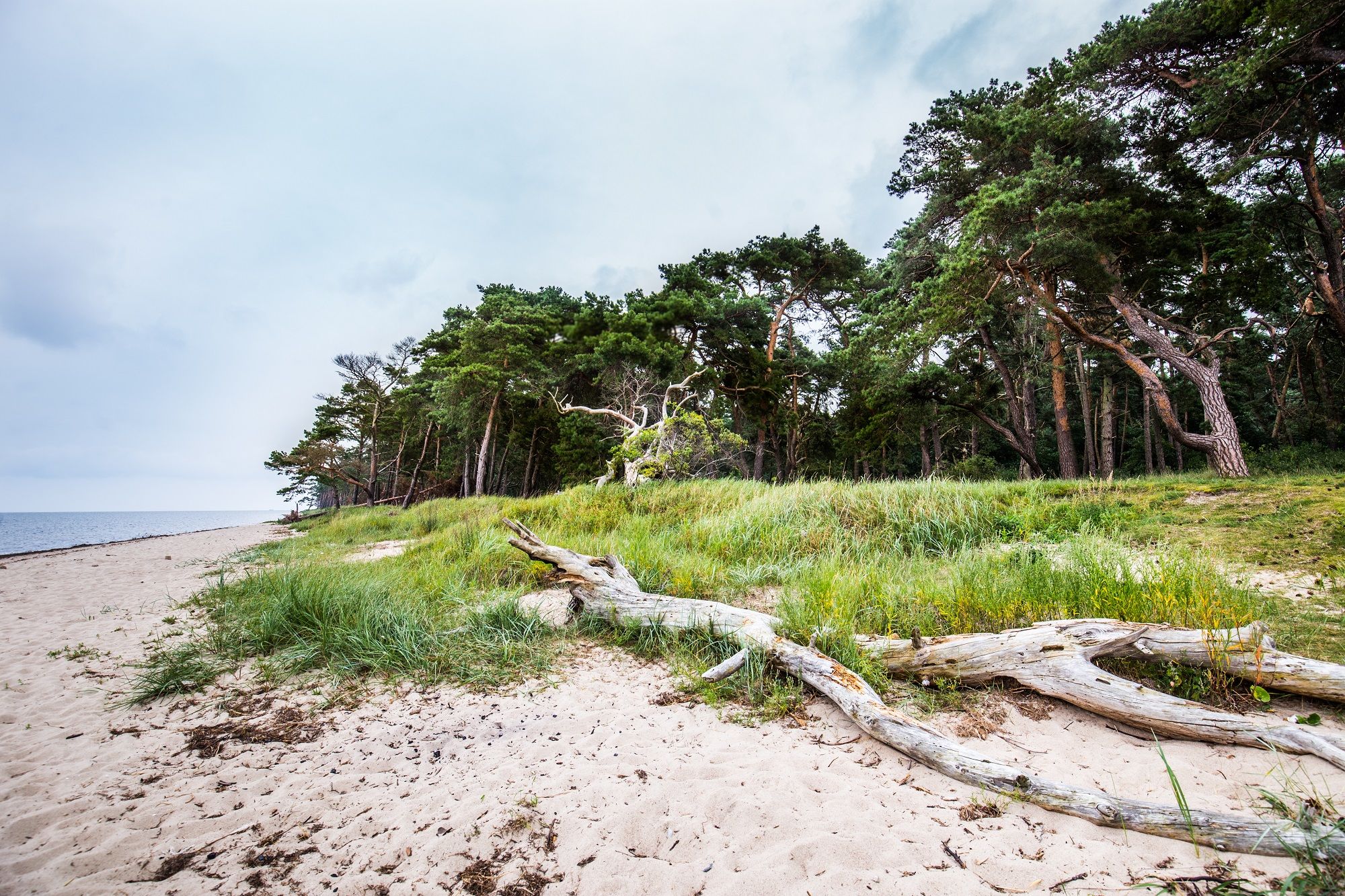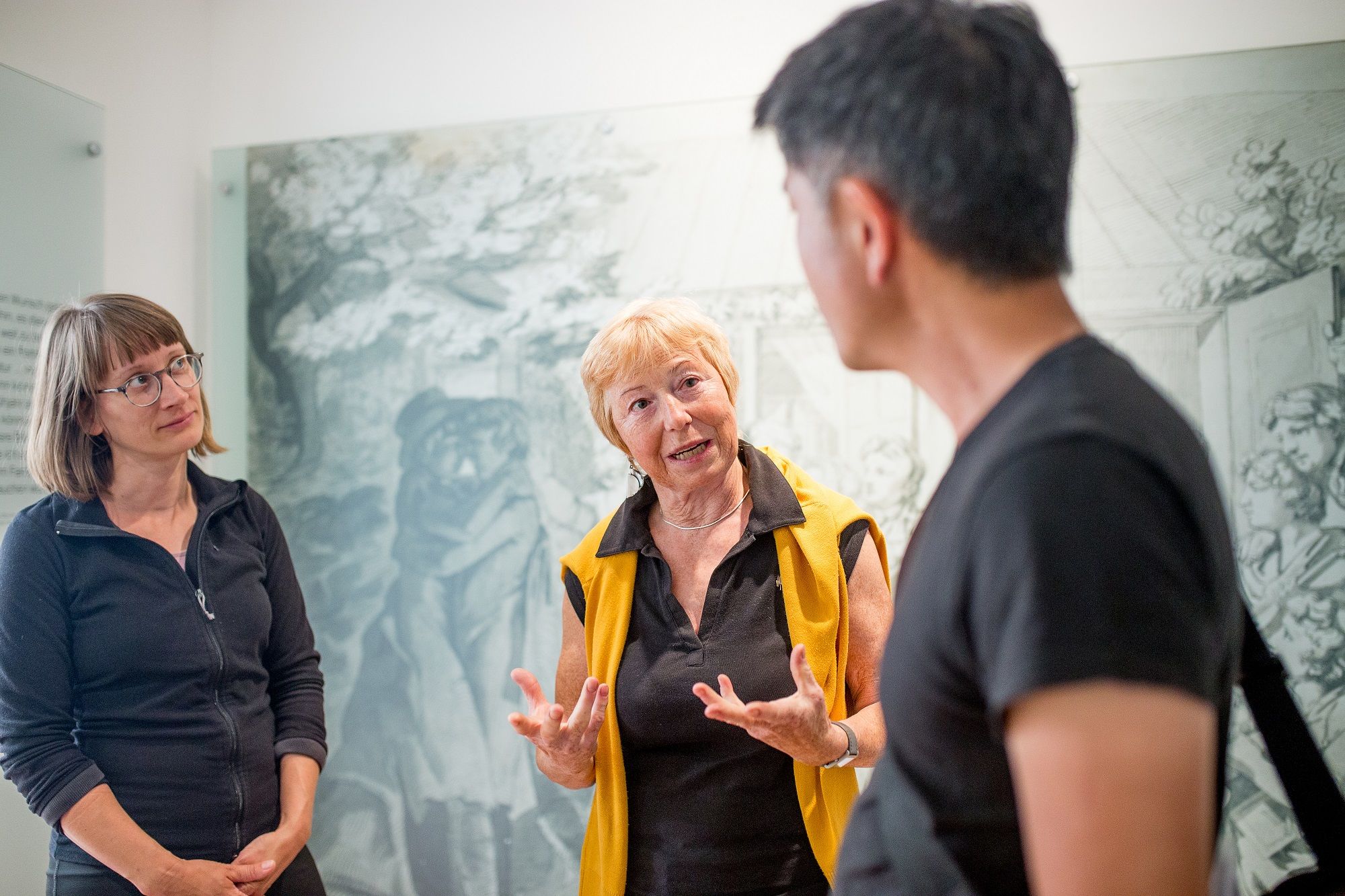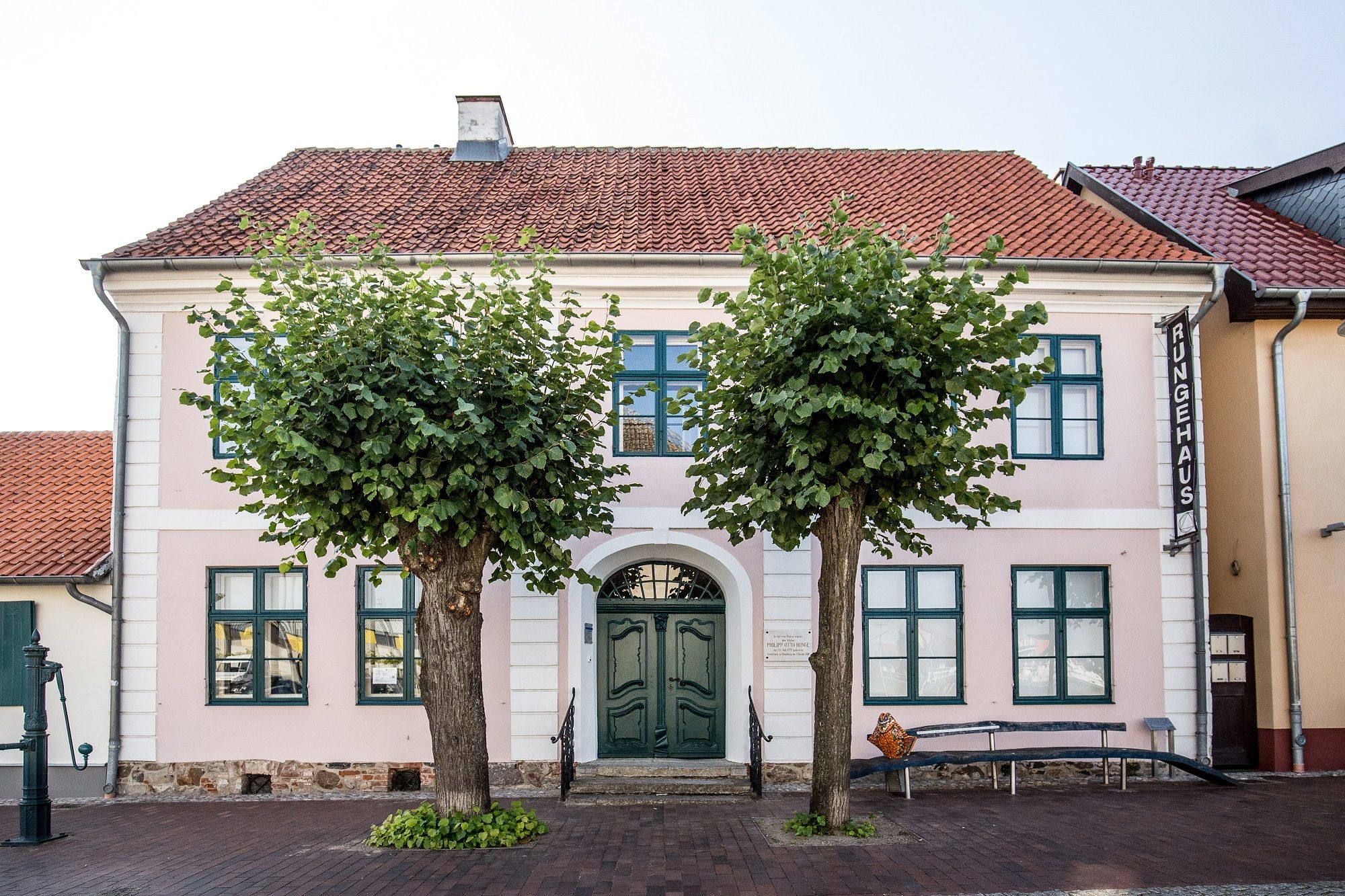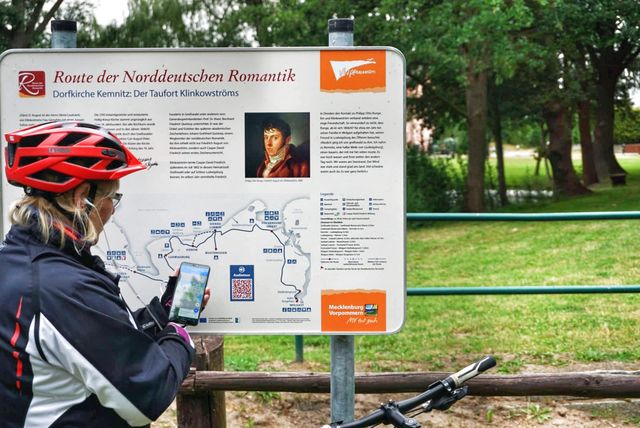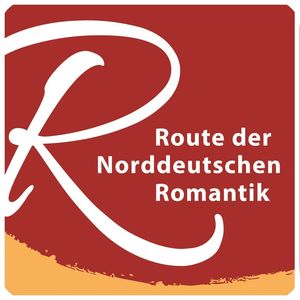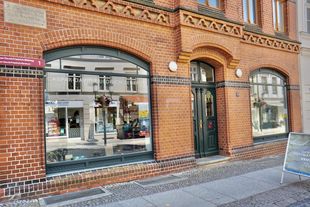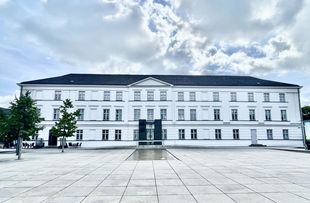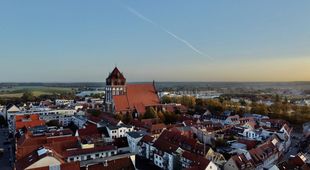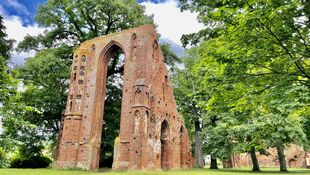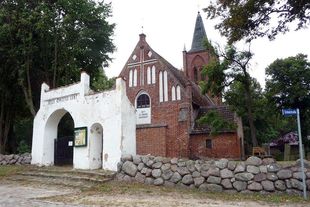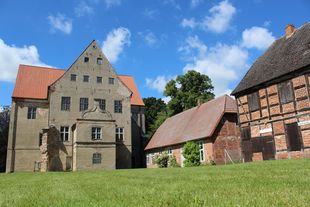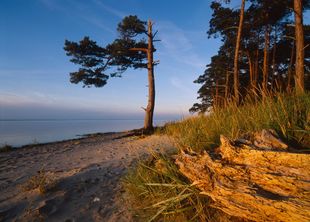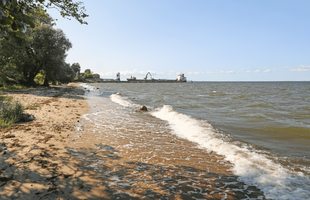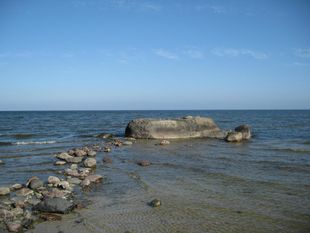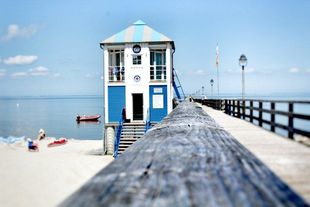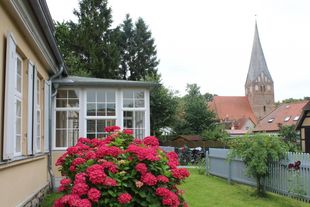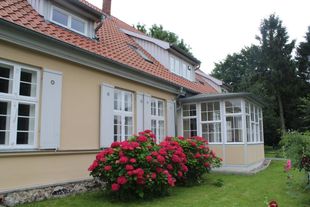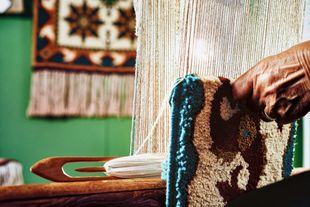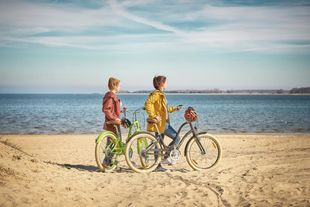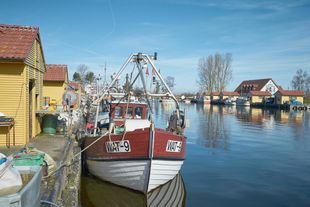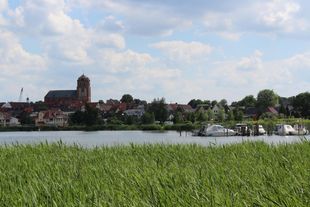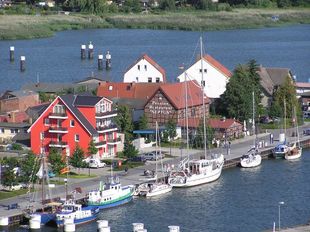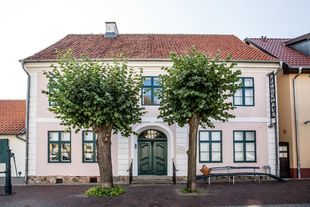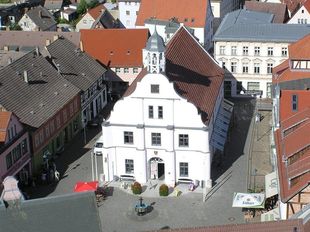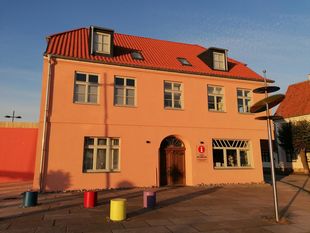Route of North German Romanticism
Between Greifswald and Wolgast, the Route of North German Romanticism combines the art and literature of the Romantic era with today's nature experience along the coast of Greifswald Bay.
The themed bike route focuses on the Romantics from Vorpommern: Caspar David Friedrich, Friedrich August von Klinkowström, Karl Gottlieb Lappe and Philipp Otto Runge.
From the ruins of Eldena Abbey to the Rungehaus Wolgast - on the altogether 54 kilometers long Route of North German Romanticism, important life and motif stations of the early Romantic painters Friedrich, Klinkowström, Runge and the poet Karl Lappe are passed. Including original locations with cultural treasures such as the Ludwigsburg castle, the parsonage Wusterhusen or the harbours of Vierow and Wolgast. Following the Baltic Coast Cycle Route (Ostseeküsten-Radweg), information boards at 10 designated stations provide background information on the artistic and private development of the four protagonists and provide a selection of interesting tips on other natural and cultural highlights along the route.
The tour starts individually (or guided by trained nature-culture guides) in Greifswald or Wolgast. Central and regular train connections in these cities allow for easy arrival and departure with your own bike. In addition, rental bicycles of the UsedomRad stations ensure a comfortable and flexible journey. A variety of lodging, dining and cultural options along the route invite for relaxed stops or longer stays.
Distances of the route at a glance:
Greifswald Town Centre - Ruins of Eldena Abbey: 5.5 km
Greifswald Ruins of Eldena Abbey - Kemnitz: 6,1 km
Kemnitz - Ludwigsburg castle: 4.3 km
Ludwigsburg - Loissin - Vierow: 7.3 km
Vierow - Seaside Resort Lubmin: 4.3 km, alternatively via Vierow Harbour: 4.7 km
Seaside Resort Lubmin - Wusterhusen: 2,3 km
Seaside Resort Lubmin - Fishing Village Freest: 8,4 km
Fishing Village Freest - Wolgast Dreilindengrund: 11.8 km
Wolgast Dreilindengrund - Wolgast Harbour: 1.0 km
Wolgast Harbour - Wolgast Rungehaus: 0,1 km
Total distance: about 54 km
Route of North German Romanticism
Stations and places along the route

Caspar David Friedrich Center
The Caspar-David-Friedrich-Zentrum, opened in 2004 in the historic Seifensiederei and expanded in 2011 to include the entire former residential and commercial building of the Friedrich family, commemorates the great painter and greatest son of the city of Greifswald. It is also a museum, documentation and research center. Caspar David Friedrich was born here on September 5, 1774.

Pomeranian State Museum
14,000 years of eventful history on the southern Baltic coast on both sides of the Oder are presented between the former Franciscan church and the city wall - in an award-winning ensemble of buildings that impressively combines Gothic, classicist and contemporary architecture. The valuable collection of paintings presents works by renowned painters such as Caspar David Friedrich, Frans Hals, Philipp Otto Runge, Max Liebermann, Max Pechstein and Vincent van Gogh.

St. Mary's Church Greifswald
St. Mary's Church is a parish church in the middle of Greifswald's old town. St. Mary's Church can be visited after the Sunday service until 1 pm. The following opening hours apply in June, July and August: Monday to Friday from 10 am to 6 pm and Saturday 11 am to 3 pm. You can register for guided tours of the church at the church office or in the church.

Eldena monastery ruins
The monastery ruins and park are a popular excursion destination for Greifswald residents and their guests. The monastery ruins are also the starting and finishing point of the themed cycle path "Route of North German Romanticism", which traces the stations and lives of the North German Romantics of Western Pomerania.

Village church Kemnitz
The village church in Kemnitz looks back on a long tradition. In the rectory, right next to the church is a small exhibition of the painter Friedrich August von Klinkowström.The theme cycle path "Route of North German Romanticism", which runs from Greifswald to Wolgast, leads to the places of this painter of the romantic period.

Ludwigsburg Palace
The Renaissance palace Ludwigsburg was built between 1577 and 1592 as a widow's seat for Hedwig Sophie von Pommern-Wolgast. After her death in 1631 the palace changed hands several times until it was sold to the Greifswald merchant Weissenborn in 1810.

Ludwigsburg Natural Beach
Ludwigsburg beach is a popular destination for holidaymakers and locals. On hot summer days you can relax in a shady spot under the pine trees of the coastal forest or enjoy the rustic food and drink in a local inn. The homemade cakes are highly recommended.Kiters and surfers will love the beach and the shallow water of the Danish Wiek and the Bay of Greifswald.

Natural Beach Vierow
Not far from the small industrial port of Vierow and about 2 km from the village of Vierow, you can reach the natural beach Vierow on a hiking and cycling path. Lined by small and large stones and protected by a cliff about 1 to 3 meters high, the southern coast of Rügen with Zudar and peninsula Mönchgut in sight. Already Caspar-David Friedrich looked from here to the island of Rügen and drew “Fischerboote am Strand”.

The "Teufelsstein" in Lubmin
The “Teufelsstein”, which translates to “Devil’s Stone”, is a boulder in the Greifswalder Bodden near Lubmin. As late as 1909 it was above the cliff. It serves as a benchmark for surveying the coastal decline. It is a popular photo opportunity on a hike along the cliff coast to Vierow and on the high shore back to the seaside resort of Lubmin.

Seaside Resort of Lubmin
The peaceful seaside resort of Lubmin with its 350 m long pier, a wide child-friendly sandy beach and picturesque and quaint pine forests is perfect for a family holiday. Lubmin is one of the stations of the "Route of North German Romanticism".

Village church Wusterhusen
The village church Wusterhusen in Western Pomerania is originally from the 13th century.

Constant Exhibition of the Poet Karl Gottlieb Lappe in Wusterhusen near Lubmin
Karl Gottlieb Lappe - a nearly forgotten Poet (1773-1843). A constant exhibition in Wusterhusen, close to the beach Resort Lubmin, is located in the rectory of Wusterhusen's church. Here, the life and works of the poet Karl Lappe is documented and readings bring the poet's achievements closer. Wusterhusen is one of the stations of the "Route of North German Romanticism".

Museum of Local History Freest
The small museum hosts a collection of many different commodities, which were used in the daily life of the local fishermen and farmers. The exhibition hall was carefully arranged by the village’s residents. Special attractions are the famous traditional carpets of Freest.

Beach Freest
The beach is perfectly suited for a sunbath, has a child-friendly shore and a small playground. Dogs are not allowed.

Fishing Harbor Freest
The fishing village Freest is located directly at the mouth of the Peene River to the Bay of Greifswalder and is home to the largest fishing port in Mecklennburg-Vorpommern (MV). Every 5th fish in MV is caught here, mostly herring, flounder and cod. Also the oldest smokehouse in Vorpommern is located near the harbour. From May to October guests can take the ferry to the island of Usedom, Peenemünde, every hour from May to October. Bicycle transport is also possible.

The Dreilindengrund in Wolgast
Located on the Peenestrom in the district Tannenkamp in Wolgast you drive on the route of North German Romanticism along the Dreilindengrund. This translates to: The Ground of three limetrees. The name was given to it from the landing stage at the transfer of the fallen Swedish king Gustav II Adolf in 1633 during the Thirty Years' War. In memory of him three lime trees were planted. The small forest nearby was named Gustav-Adolf-Schlucht.

City Harbour Wolgast
The city harbour of Wolgast spreads an impressive maritime flair and is part of the "Route of the North German Romanticism." . Passenger ships set off on excursions into the backwater and to the Bay of Greifswald. The sailing ship "Weisse Düne" invites guests for a trip. A sensational view to the Petrikirche and the city centre is offered to the viewer. The imposing bascule bridge to the island of Usedom and the Peene shipyard characterise the town on the Peene river.

Museum Rungehaus
The museum Rungehaus is the birth house of the painter and romantic artist Philipp Otto Runge (1777-1810). Alongside Caspar David Friedrich, he is regarded as one of the most important painters and graphic artists of the German Romantic period.

Historic Town Hall Wolgast
The historic town hall forms the core of Wolgast old town on a medieval groundplan. In the town hall the tourist information Wolgast is located downstairs.

